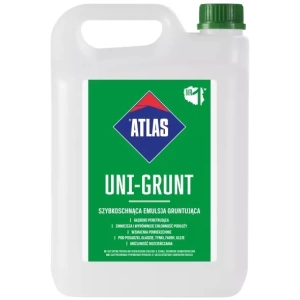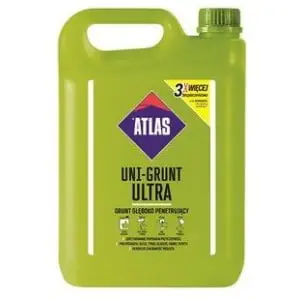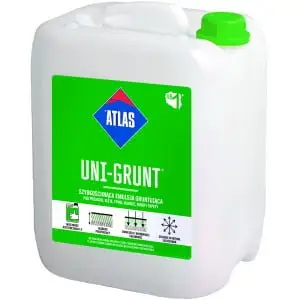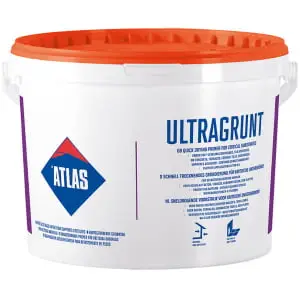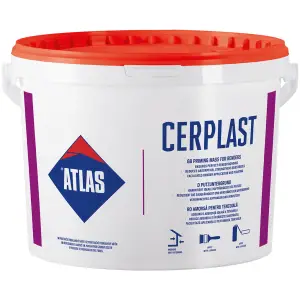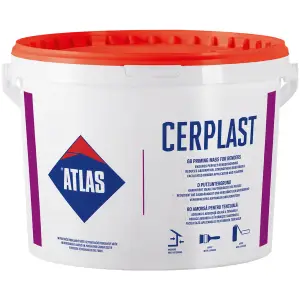Wall Primers
Wall Primers
Our wall primers prepare the surface for strong adhesion. A quartz primer boosts grip and levels absorbency. Choose a CT16 quartz primer or Atlas Cerplast for top‑coat prep. Moreover, the right primer for renders prevents patchy colour and weak bonding.
Why wall primers matter
Wall primers seal, stabilise, and improve wetting. Consequently, renders spread evenly and cure as intended. A quartz primer adds fine quartz to increase key. In addition, it helps on dense or smooth substrates. Choose a top‑coat primer that fits your system.
Product lineup
Pick between two proven facade primers for EWI and exterior work. Additionally, both support silicone and silicate topcoats.
- Ceresit CT16 — a CT16 quartz primer and top‑coat primer that improves adhesion and colour coverage. Ideal under renders and masonry paint. Also known as Ceresit CT16.
- Atlas Cerplast — a ready‑to‑use Cerplast primer for renders. It evens absorbency and creates a reliable key. Moreover, Atlas Cerplast supports consistent finish texture.
Application notes
Clean and dry the substrate first. Remove dust, laitance, and chalking. Then apply the primer by brush or roller. Stir well before use. Do not dilute unless the data sheet allows it.
Use a quartz primer on smooth or low‑porous areas. Additionally, prime fresh basecoats only when fully dry. Apply an even film without puddles. Consequently, the primer for renders supports uniform suction and grip. Finally, let the layer dry before the topcoat.
System compatibility
Our wall primers work with silicone and silicate renders. They also suit facade paints. In addition, a quartz primer helps where adhesion is critical. Therefore, you can build a stable, system‑ready base.
FAQs
CT16 or Cerplast for my project?
Choose Ceresit CT16 when you need a CT16 quartz primer with added grip. Pick Atlas Cerplast when you want a smooth, stabilising Cerplast primer for renders.
Do I need a primer for renders on old paint?
Usually yes. A top‑coat primer equalises absorbency and improves bonding. However, always test a small area first.
Can I skip priming on new basecoat?
No. Wall primers reduce suction and improve adhesion. Consequently, the finish looks even and lasts longer.
Is a quartz primer only for smooth surfaces?
Not only. A quartz primer helps on many substrates. It adds key where extra grip is needed.
Wall Primers
Our wall primers prepare the surface for strong adhesion. A quartz primer boosts grip and levels absorbency. Choose a CT16 quartz primer or Atlas Cerplast for top‑coat prep. Moreover, the right primer for renders prevents patchy colour and weak bonding.
Why wall primers matter
Wall primers seal, stabilise, and improve wetting. Consequently, renders spread evenly and cure as intended. A quartz primer adds fine quartz to increase key. In addition, it helps on dense or smooth substrates. Choose a top‑coat primer that fits your system.
Product lineup
Pick between two proven facade primers for EWI and exterior work. Additionally, both support silicone and silicate topcoats.
- Ceresit CT16 — a CT16 quartz primer and top‑coat primer that improves adhesion and colour coverage. Ideal under renders and masonry paint. Also known as Ceresit CT16.
- Atlas Cerplast — a ready‑to‑use Cerplast primer for renders. It evens absorbency and creates a reliable key. Moreover, Atlas Cerplast supports consistent finish texture.
Application notes
Clean and dry the substrate first. Remove dust, laitance, and chalking. Then apply the primer by brush or roller. Stir well before use. Do not dilute unless the data sheet allows it.
Use a quartz primer on smooth or low‑porous areas. Additionally, prime fresh basecoats only when fully dry. Apply an even film without puddles. Consequently, the primer for renders supports uniform suction and grip. Finally, let the layer dry before the topcoat.
System compatibility
Our wall primers work with silicone and silicate renders. They also suit facade paints. In addition, a quartz primer helps where adhesion is critical. Therefore, you can build a stable, system‑ready base.
FAQs
CT16 or Cerplast for my project?
Choose Ceresit CT16 when you need a CT16 quartz primer with added grip. Pick Atlas Cerplast when you want a smooth, stabilising Cerplast primer for renders.
Do I need a primer for renders on old paint?
Usually yes. A top‑coat primer equalises absorbency and improves bonding. However, always test a small area first.
Can I skip priming on new basecoat?
No. Wall primers reduce suction and improve adhesion. Consequently, the finish looks even and lasts longer.
Is a quartz primer only for smooth surfaces?
Not only. A quartz primer helps on many substrates. It adds key where extra grip is needed.


